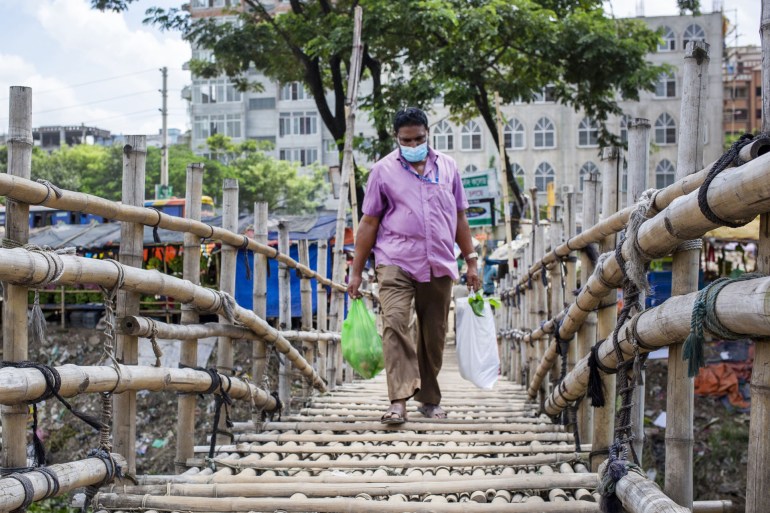The International Monetary Fund published its report for the month of October 2020, entitled "World Economic Prospects ... A Long and Arduous Rise", in which it stated that Bangladesh overcame India in terms of GDP per capita, which reached 1888 US dollars.
The writer Sharif al-Islam says in a report published by the American “modern diplomacy” website, that these figures are interesting, especially when compared to India, which only 5 years ago achieved a GDP per capita that exceeded Bangladesh by 40%.
"Every emerging economy is good news," comments on these changes, former World Bank economist Kaushik Basu.
The writer adds that the plans, vision and decisions taken by the government of Sheikha Hasina Wajid and the work that she did with the people of her country is what made this success possible for Bangladesh.
Constructive cooperation
Although many evaluate this success by comparing the Bangladeshi economy with India, Bangladesh in reality considers India to be a friend and not a competitor, and believes in constructive cooperation with it and with other major powers instead of conflicts and competition, and it acknowledges the role of major partners in economic and social development projects.
The amazing economic success of Bangladesh has become the talk of the media and the street in India, especially as it comes in a context in which many countries of the world, especially developing countries, suffer great difficulties, due to the global Corona epidemic.
Despite these circumstances, Bangladesh is currently achieving positive growth, and in this context it becomes necessary to discuss the secrets and keys to the success of Bangladesh in the rise as an economic power.
The writer believes that in order to understand these results achieved by Bangladesh, one must look at the past, as long decades of persecution, oppression, injustice and discrimination between East and West Pakistan have made people in East Pakistan poor and illiterate.
For example, during the years between 1960 and 1970 the annual income per capita of Bengali was 450 Bangladeshi taka (currently equivalent to 5.3 US dollars), half of the people were malnourished, and the literacy rate was only 17%.
The amazing economic success of Bangladesh has become the talk of the media and the street in India (European News Agency)
Economic success
During that period, Bangladesh was a part of Pakistan, but its economy was suffering from stagnation, as the economic policy adopted by the Pakistani central government made its economy slump back, due to weak government expenditures and investment, and mishandling of foreign aid and trade.
This economic and political discrimination against the people of East Pakistan pushed them to join the independence movement under the leadership of Sheikh Mujibur Rahman, and Bangladesh actually got its independence in 1971.
Today the situation in Bangladesh has changed dramatically, as Prime Minister Sheikh Hasina wrote an article in October 2019 in which she said: “In addition to self-sufficiency, we are now the fourth largest producer of rice, the second largest producer of jute, the fourth largest producer of mangoes, and the fifth. The largest producer of vegetables, and the fourth largest producer from inland fisheries. "
Bangladesh has been achieving a growth rate of more than 6% since 2009, and these achievements stand behind Prime Minister Sheikh Hasina, in addition to the tireless work of tens of thousands of peasants, factory workers, textile workers and the rest of the people.
And Sheikh Hasina, after assuming the premiership in 2009, set specific goals, such as achieving the status of a middle-income country in 2021, achieving comprehensive development goals by 2030, then transforming into an advanced country by 2041, achieving the status of a miracle country in 2071, and then implementing the plan. "Delta" by the year 2100, and thus the country of Bangladesh will progress according to clear and specific plans.
Many believe that Bangladesh could actually become a developed country by 2041, if political stability continues in the country, along with the support of international partners.
Among the strengths of Bangladesh is that out of 170 million people, more than 60% of the youth have energy and vitality and can participate in advancing development, because this country is not just a basket that supplies the world with food.

